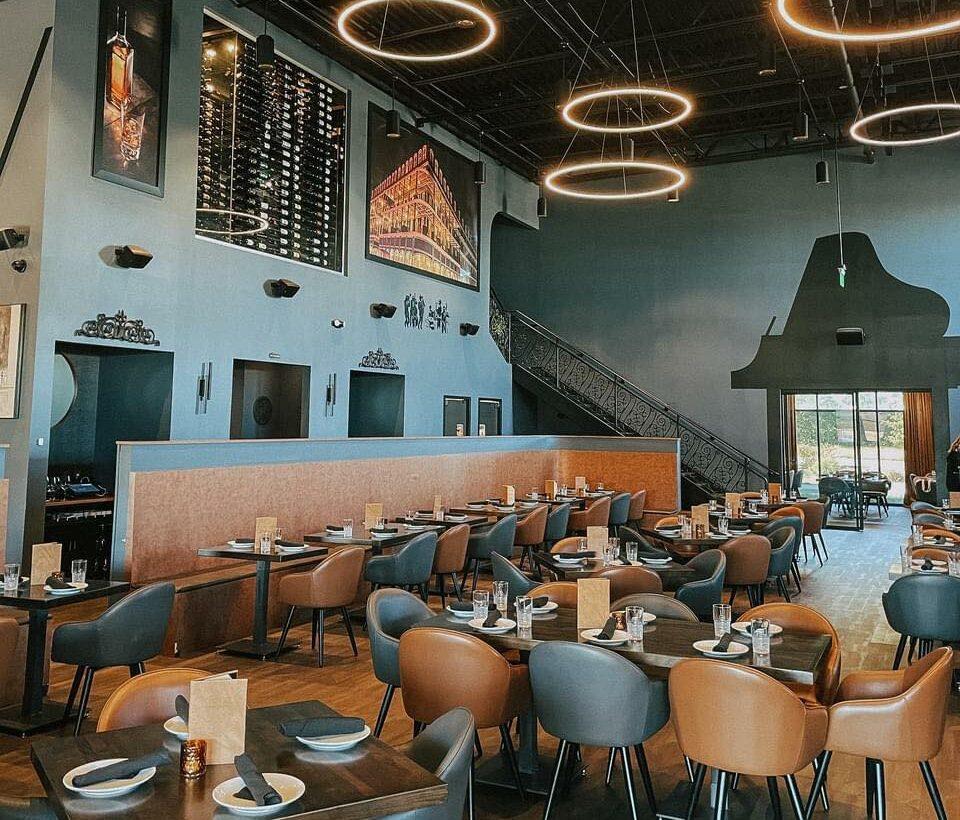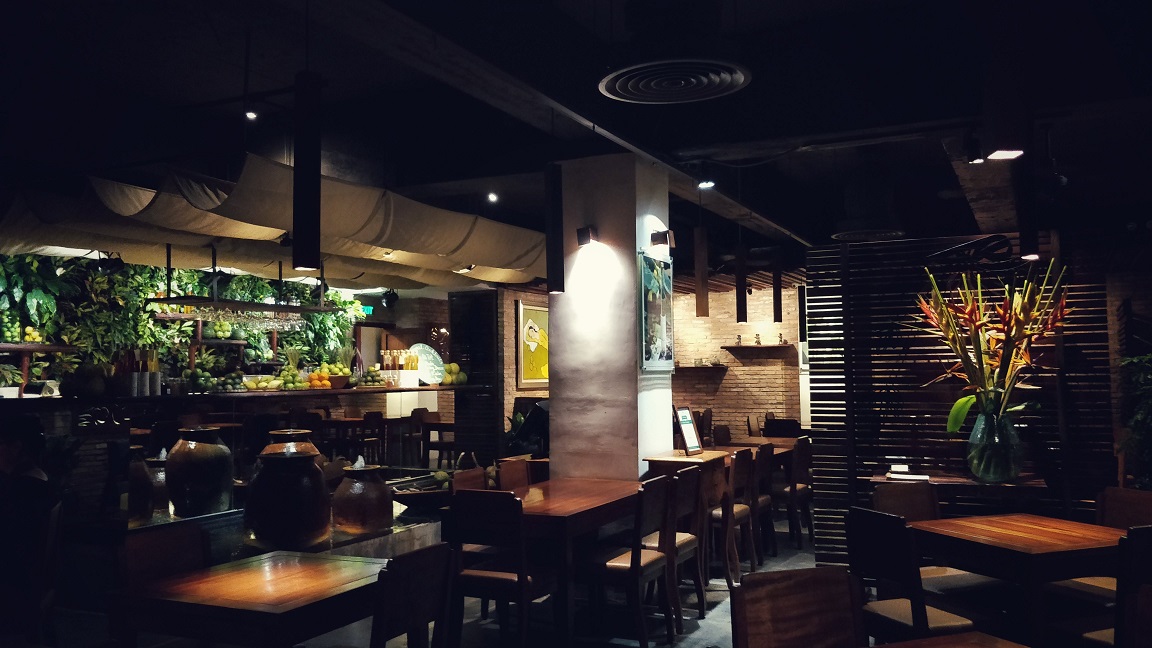Best Asian Restaurant Islamabad: Experience Flavors from Across Asia
Wiki Article
Savor Authentic Eastern Cuisine With a Pan-Asian Spin for a Cooking Experience
Beginning on a cooking journey with genuine Asian cuisine, boosted with a Pan-Asian twist, provides an one-of-a-kind chance to explore the rich tapestry of tastes that specify the region's diverse culinary practices. As you consider these attracting dishes, think about the cultural narratives and historic influences that shape them, each bite offering a story waiting to be discovered. Chinese food Islamabad.
Discovering Pan-Asian Flavors
In the realm of global gastronomy, Pan-Asian food sticks out for its remarkable diversity and the harmonious interaction of tastes from various Eastern societies. This culinary technique celebrates the distinct active ingredients and abundant traditions found throughout the continent, producing a tapestry of preferences that is both satisfying and appealing. Key to Pan-Asian food is its capacity to stabilize different tastes-- sweet, salty, spicy, and sour-- while highlighting the quality and quality of each active ingredient.From the umami-rich soy sauce of Japan to the fiery chili peppers of Thailand, Pan-Asian cuisine offers a comprehensive combination of tastes. These elements are frequently integrated in creative means, enhancing dishes with layers of complexity. For instance, making use of aromatic herbs such as lemongrass and cilantro, usual in Vietnamese and Thai food, adds a revitalizing brightness to meals, while the consolidation of coconut milk provides a creamy, rich structure.
The focus on fresh produce and fragrant spices ensures that each meal is not just a banquet for the palate yet additionally for the detects. Pan-Asian cuisine welcomes restaurants to begin on a culinary journey, exploring the large and differed landscapes of Oriental gastronomy with every bite.
Fusion Recipes to Attempt
While Pan-Asian food is celebrated for its standard tastes, the contemporary cooking landscape is increasingly embracing blend recipes that blend these classic components with impacts from other areas. This ingenious method not just honors the rich heritage of Eastern cookeries but also introduces unique preference experiences that attract modern tastes buds.
A prime example of such a blend recipe is the Korean-Mexican taco, where marinated bulgogi beef is wrapped in a cozy tortilla, covered with kimchi and a hot gochujang-infused salsa. This combination weds the strong, tasty flavors of Korea with the lively, fresh aspects of Mexican food. In a similar way, sushi burritos have actually obtained popularity, integrating the fragile creativity of Japanese sushi with the hearty, hand-held comfort of a burrito, typically including combination ingredients like tempura shrimp and avocado with a drizzle of wasabi mayo.
An additional noteworthy dish is Thai curry ramen, which instills the luscious, aromatic spices of Thai curry into the soothing brew of conventional Japanese ramen, creating a harmonious mix that entices the detects. These blend recipes expand beyond plain uniqueness; they stand for a cooking dialogue in between cultures, urging expedition and innovation worldwide of Pan-Asian cuisine.
Vital Active Ingredients and Seasonings
To truly appreciate Pan-Asian food, one have to recognize the crucial active ingredients and spices that form its structure. This diverse culinary style attracts from an abundant tapestry of Eastern customs, using an unified mix of flavors and textures. Trick ingredients consist of soy sauce, fish sauce, and oyster sauce, which give a mouthwatering umami deepness vital to Oriental dishes. Corresponding to these are rice vinegar and mirin, lending a fragile level of acidity and sweet taste.Fragrant components are pivotal, with ginger, lemongrass, and garlic being common throughout various Pan-Asian dishes. These active ingredients provide a fragrant base that enhances the intricacy of flavors. Flavors such as celebrity anise, cardamom, and cinnamon introduce warmth and personality, echoing influences from areas like China and India.

Cooking Techniques and Tips
Grasping the art of Pan-Asian cuisine needs knowledge with its distinctive food preparation techniques, each adding to the dynamic tapestry of tastes this culinary tradition is commemorated for. Central to these methods is the stir-fry, a fast cooking strategy that maintains the nutritional stability and vivid shades of components. Using a wok, the stir-fry method enables for also warm distribution, vital for achieving the particular structure and taste balance of Pan-Asian meals.Another fundamental technique is steaming, particularly prevalent in Chinese cuisine. This mild approach maintains the all-natural tastes and nutrients of ingredients, making it optimal for fish and shellfish and vegetables. Dumplings, a beloved staple, usually take advantage of steaming, leading to soft, delicious appearances.
Barbecuing, also integral, presents smoky midsts to recipes such as Oriental bulgogi or Japanese yakitori (pan asian dining Islamabad). This technique often entails marinading ingredients, allowing flavors to pass through deeply before cooking over an open flame or warmer
Finally, understanding the art of stabilizing tastes-- wonderful, sour, salty, bitter, and umami-- is important. Appropriately layering these components can boost a recipe from normal to remarkable, using a facility and satisfying culinary experience that symbolizes the significance of Pan-Asian cuisine.
Dining Experiences Worldwide
Around the world, Pan-Asian food supplies an unmatched eating experience, celebrated for its abundant tapestry of tastes and lively presentations. This cooking phenomenon has actually gone beyond cultural limits, catching the hearts and tastes buds visit this site of food enthusiasts worldwide. In multicultural cities like New York, London, and Sydney, Pan-Asian restaurants act as fusions where culinary practices from Thailand, Japan, China, and beyond merge, giving restaurants with an eclectic mix of meals that highlight the region's diversity.The international charm of Pan-Asian cuisine exists in its capability to provide both credibility and development. Chefs masterfully wed traditional ingredients such as lemongrass, soy sauce, and miso with modern techniques, resulting in recipes that are both refreshingly new and acquainted. This blend enables diners to start a cooking journey that values heritage while accepting modernity.
Furthermore, eating experiences are raised via thoughtfully designed environments that reflect the principles of Pan-Asian visual appeals. From minimalist Japanese-inspired interiors to vivid Thai-themed rooms, each dining establishment offers a distinct setting that matches the culinary offerings. Therefore, patrons are not merely taking in a dish yet partaking in a social experience, making Pan-Asian eating a genuinely international phenomenon.
Final Thought
The expedition of Pan-Asian cuisine provides a profound understanding of the intricate interplay of flavors and cooking traditions across Asia. By welcoming blend dishes such as Thai curry ramen and sushi burritos, the culinary journey not just highlights the flexibility of standard components yet also showcases ingenious modern-day methods. This gastronomic journey, improved by cooking methods and crucial flavors, provides an unique chance to value the multiculturalism and culinary artistry that specify Pan-Asian cuisine on an international range.Getting started on a culinary trip via authentic Asian food, improved with a Pan-Asian spin, offers an one-of-a-kind possibility to check out the rich tapestry of flavors that define the region's varied culinary customs.In the realm of global gastronomy, Pan-Asian cuisine stands out for its impressive variety and the harmonious interaction of flavors from various Eastern societies. Secret to Pan-Asian food is its ability to balance contrasting tastes-- sweet, salted, spicy, and sour-- while highlighting the freshness and quality of each component.

Report this wiki page